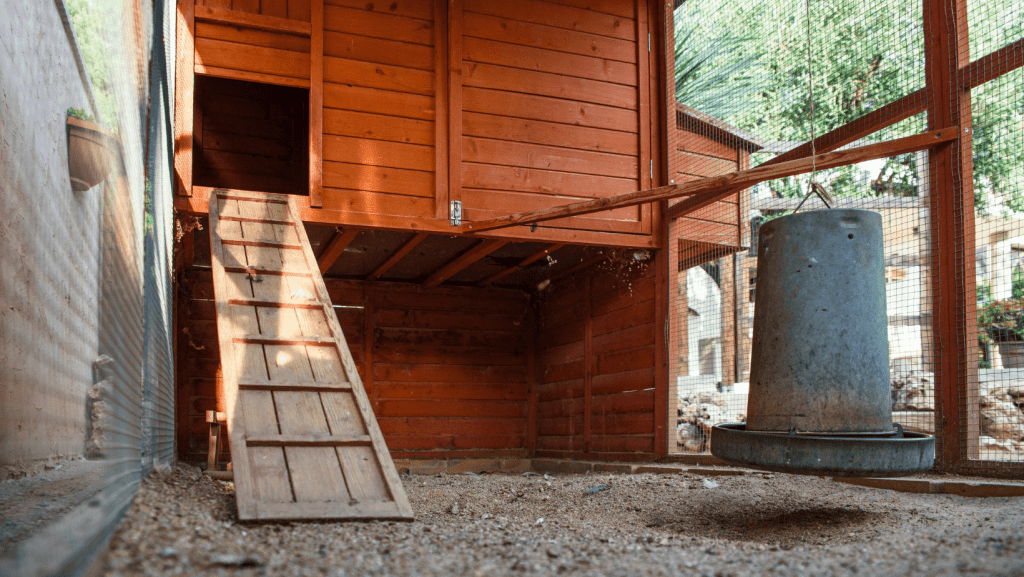Raising chickens is generally low maintenance and highly rewarding; they’re not picky eaters, they provide beautiful eggs, and setting up a coop and run isn’t too expensive.
However, one question that might arise when you’re setting up the coop is, “What should I use for their run?”
Is bad for ? Is any better? If so, should you go for or finer grits? Generally speaking, using as a top layer for runs isn’t the best idea. Let’s find out why is bad for chickens.
?
For chickens of all shapes and sizes, walking on rough can lead to a lot of health problems, most commonly bumblefoot, which is a Staph aureus bacterial infection of feet. It looks like a pus-filled, swollen blister, and it can be extremely painful to walk on.
runs are bad for chickens for a number of reasons. Firstly, It’s harder to clean out droppings from runs, so feces can stick between crooks collecting bacteria, encouraging flies and other bugs in the run, and increase the risk of bacterial infection.
Secondly, the coarse, sharp can, over time, injure your ’s feet. A small cut here and there in a and whatever’s collecting between the rocks makes for a nasty bacterial infection.
Chickens are generally pretty resistant and resilient to the elements, but, when they are forced to walk on all the time they can quickly develop foot problems which can end up being fatal.
Avoiding Bumblefoot With Floor Runs
If you do have a run or are forced to use one because of your environment, there are a few things you can do to help your chickens and avoid potential harm and infections:
- Use fine horticultural grit (1 to 6 mm in diameter) to pad out the , rather than larger rocks. Chickens will sometimes eat this grit for digestion too!
- Hose the two times a week with water. This clears out any droppings and turns over the stones.
- Create better drainage systems by building on high grounds. This prevents pooling of bacteria.
- Insulate the coop nicely against rainwater. You don’t want any dirty water puddles forming between the . The may drink it at the risk of gastroenteritis, too
- You can always use the deep bedding method on top of your gravel too!
If your birds end up with bumblefoot, Epsom salts and antibacterial sprays can help treat the infection.
How To Safely Use In A Run

When you’re constructing a , using as the lower layer can actually be beneficial. It helps air out the inner soil and increases drainage. To use this to your advantage, pad down the coop with small , then cover it with your choice of or fine , or both.
For the top layers, is usually the best option. It’s not rough or large enough to hurt your chickens, and it’s still fine enough to drain out puddles. Fine can work fine too, but it coagulates too easily and can be messy. can also be used as or .
runs are also easier to clean. You can pick up the excrement easily with either a dropping board or poop shovel. Whatever is left seeps deep into the ground and decomposes.
Reducing Bad Smells in Coops
When any water mixes with droppings it ends up giving off a nasty ammonia-like smell. Because at a lower layer increases drainage and circulation it will naturally reduce any foul smells in your coop (pardon the pun). But, besides regular cleaning and proper drainage systems in place, you can also add various natural ingredients to your coop to help with bad smells.
A good tip is to try to add absorbent lime on the top of your layer, then cover it with your top or wood layer. You only need to change this seasonally, and it helps absorb excess moisture and provides a bit more of a fresh scent. You can also try using fresh herbs and flower petals in and around their nesting boxes. If you live close to a pine tree, you can also use pine needles in your run, as its soft, greatly absorbent, and can be used as compost when it comes time to replace it.
Avoid covering the run with dirt as it comes with a host of organic material which can lead to foul smells, and chickens will sometimes eat the dirt too!
All of these extras can help the coop and run smell fresh. But really the key is to keep the coop and run as dry as possible.
The Bottom Line: Is Bad For Your Chickens?
Really, can be bad for your chickens but it all comes down to how you use it. shouldn’t be your number one choice for runs unless you are using it as the very bottom layer and plan to cover it with other material. isn’t the most hygienic or comfortable for your treasured chickens — would you want to be walking on rocks all day?
Whenever is used in commercial or backyard settings, it’s always to buff the lower layers of the soil and creates better aeration and filtration. But on the top layers, is the safest option, plus they will use it as a too! In saying that, you can also use grass, , wood, etc. for your floor — you just need to keep it clean, dry, and sanitary for your chooks!
